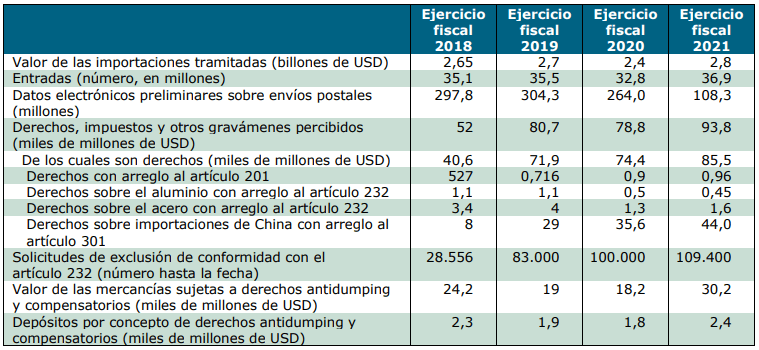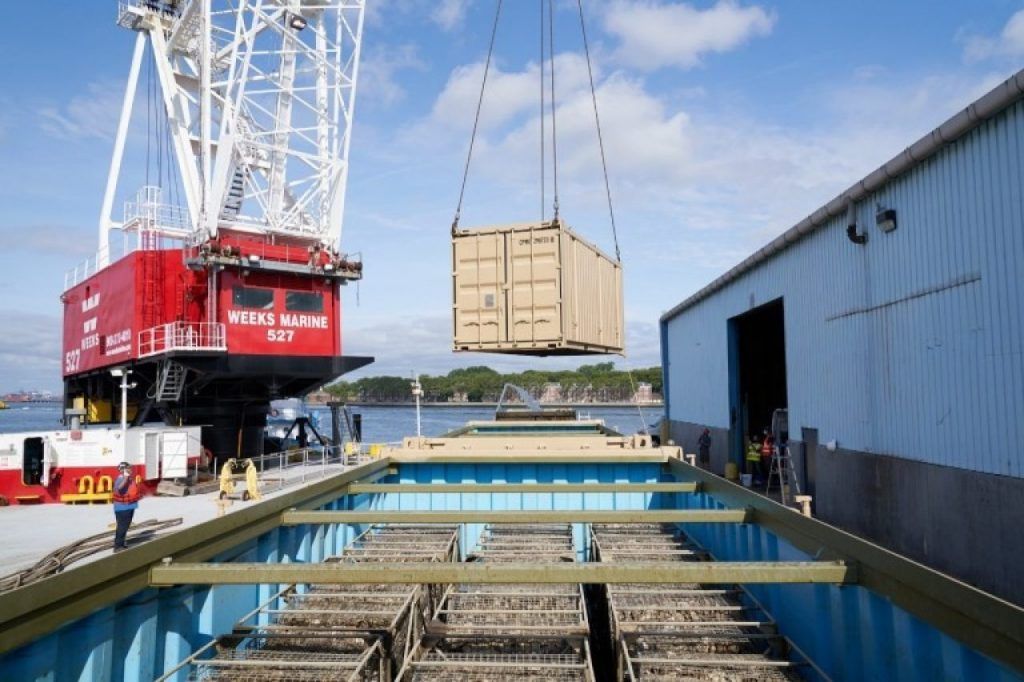U.S. Customs and Border Protection (CBP) has significantly increased its revenue, especially as a result of the increase in tariffs it charges on imports from China.
To note: CBP is a unified border intervention agency under the U.S. Department of Homeland Security (DHS) that oversees and enforces customs procedures, facilitation measures and related requirements.
Principales datos sobre las operaciones aduaneras, ejercicios fiscales de 2018 a 2021
CBP oversees trade and customs operations at 328 ports of entry across the country (i.e., land, sea, and air points of entry), as well as various operations in 50 other countries.
According to a World Trade Organization report, CBP is the Government’s second largest revenue collector and is preparing its «21st Century Customs Framework» to keep up with and adapt to a challenging new trade environment.
CBP
CBP’s revenue collections nearly doubled in a three-year period, increasing from $52 billion in FY 2018 to $93.8 billion in FY 2021 (the highest figure ever recorded).
That increase can be attributed primarily to the additional special duties that were introduced during the period under review.
CBP’s workload increased during the period, largely due to those special provisions and related work reviewing exclusions, which have also increased dramatically since 2018, from 28,556 to 100,000.
Also, enforcement of the provisions of the Mexico-U.S.-Canada Treaty (USMCA) has been an important part of CBP’s work during the period.
However, the number of imports processed and their value have not changed significantly.
![]()

